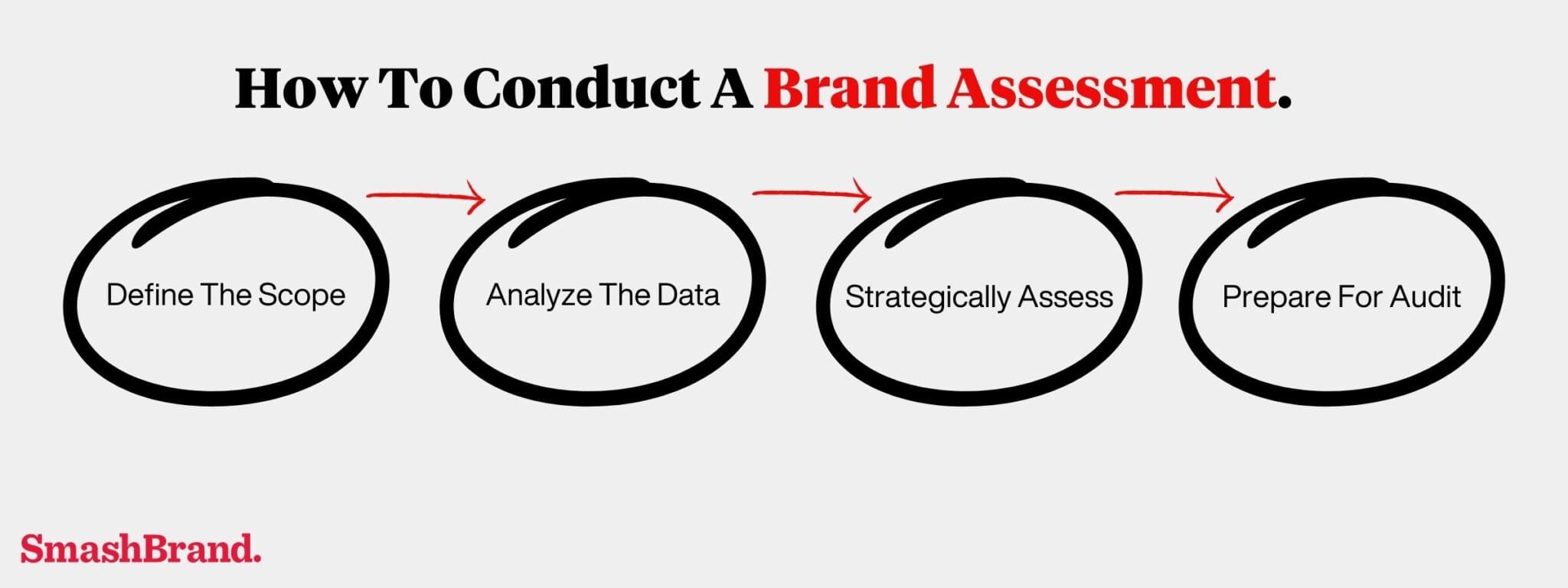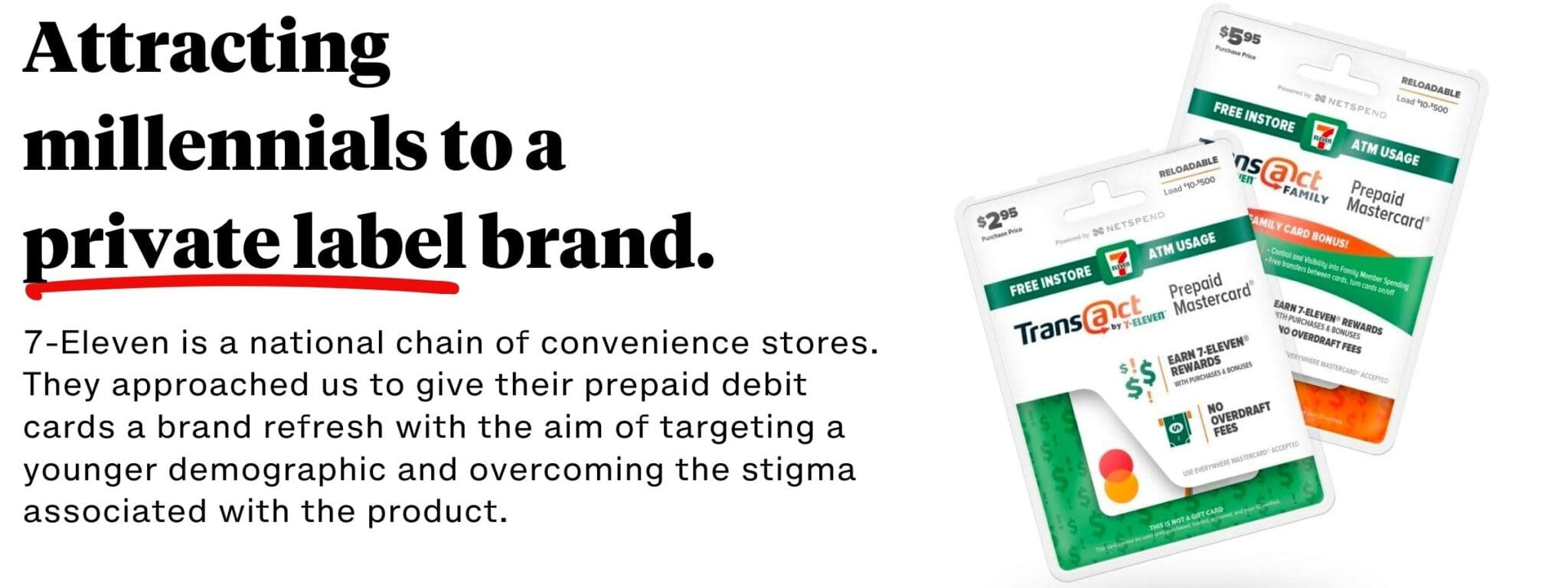Building a strong brand requires continuously understanding the company’s strengths and weaknesses. To determine this, companies must go through a brand assessment analyzing each aspect of the brand to define the current impact and to execute a more refined brand strategy.
An assessment (or brand evaluation) helps a company understand its position in the marketplace for each product and the entire company, from brand image to customer loyalty. This article walks you through the brand assessment process, helping new brands or those looking for a brand refresh understand how to perform a brand assessment that will have the most substantial impact.
Here’s what you can expect to learn
- What a brand assessment really is.
- Why an assessment is a critical component in a brand strategy.
- A step-by-step approach for how to conduct a brand assessment.
- Where brand assessments can go wrong.
Once you complete this article, you will be ready to engage in a high-level brand assessment.
What is a Brand Assessment?
A brand assessment comprehensively evaluates the brand’s strengths, weaknesses, and opportunities. The brand assessment includes all branding assets, products, and marketing materials.
In SmashBrand’s brand development PathToPerformance™ process, assessments occur after brand discovery but before the brand audit. Performing a brand health assessment includes looking at the following data points:
- Brand identity assessment
- Brand value assessment
- Brand strength assessment
- Brand opportunity assessment
- Brand equity assessment
- Brand personality assessment
We can group these metrics of measurement within the brand perception category.
Through brand research that leverages technology, social listening, focus groups, and surveys, we establish potential growth solutions helping guide the upcoming brand strategy.
Why A Brand Assessment Is Necessary
While a company may have objectives in how they hope consumers will perceive their brand positioning, company and consumer brand perception does not always align. In fact, the differences can significantly differ.
A brand may also have a subjective idea about its competitors and how it impacts its performance. They may assume a competitor is not a threat when in fact, competitive positioning is primed for future performance.
How To Conduct A Brand Assessment
You must walk through four key steps to conduct a successful brand assessment. The brand assessment questions and actions within these steps may change based on brand specifics, but they all live within them. Let’s look closer at each of these steps.
Define The Scope Of The Assessment
Perhaps the most critical step in the assessment process is having a “why” for your effort. A new brand might be looking to capture market share on a regional level. An existing national brand might aim to prevent being delisted by one of its primary retail partners. Understanding the present day gives the brand assessment meaning.
Next, you need to define the outcome. What is it you hope to achieve from the assessment? Are there any critical data points you must know? You can find the answer to these questions in the assessments “why” and the brand/market data we collect.
Before transitioning to the assessment, which of the following are you hoping to understand better?
- Brand awareness
- Brand value
Brand equity - Brand perception
- Brand identity
- Brand voice
- Brand differentiation
- Brand value proposition
Determine which levers to pull to build a successful brand based on budget and time constraints. As you gain clarity, your branding and marketing strategy will greatly improve.
Analyze The Categorized Data
The result of a brand discovery phase is to compile historical brand data, market research, and marketing materials. The accumulated and then categorized result puts forward the brand’s strengths and weaknesses concerning its competitors and the target audience.
A thorough review of this information, ensuring you have everything necessary to make initial decisions, is critical in creating your assessment of the brand.
Create A Strategic Assessment
A strategic assessment understands what exactly needs further investigation. You can assess every aspect of a brand, but there is a hierarchical priority that a brand should follow. Following a systematic process with the highest priority first puts resources in its place.
Prepare For The Brand Audit
Once you fully assess the brand, the next step is to compile the outcomes in an organized manner. Some will do this by using a brand assessment template, whereas others organize the assessments in their way.

Where A Brand Assessment Can Go Wrong
Just because you engage in a brand assessment doesn’t mean the outcomes will be accurate. Brand assessments go sideways when the identified data (through brand discovery or provided on the assessment reports) are neither relevant nor accurate.
Companies must use reliable data and be able to interpret the data effectively to prevent assessments from being a waste of time, resources, and capital. It also helps to have a brand development agency equipped to make sense of the data for a true assessment.
Data-Driven Brand Development
Want a best-selling brand? SmashBrand is a brand development agency for FMCG and CPG brands. Our PathToPerformance™ process includes a strategic brand assessment to help you understand your position and prime you to capture more market share. Book a time to discuss your project with our team.

Frequently Asked Questions
What is a brand assessment questionnaire?
A brand assessment questionnaire is a tool used to gather information and feedback about a brand’s perception and reputation. It typically consists of a series of questions that evaluate different aspects of the brand, such as brand awareness, customer satisfaction, and brand loyalty.
What Should Be Included in a Brand Assessment Survey?
A brand assessment survey should include questions relevant to the assessment’s goals and objectives. A brand assessment survey contains questions about the following:
- Brand awareness
- Customer perceptions
- Competitive positioning
- Brand personality
- Customer satisfaction
A brand development agency will design the survey to gather specific, measurable, and actionable data so that the brand can make informed decisions about improving its performance.
What Is A Trend Assessment?
A trend assessment analyzes current and emerging trends in a particular market or industry and compares them to the existing brand’s positioning. It involves collecting and analyzing data to identify patterns, shifts, and changes that can impact how brands operate and compete. Companies can gain insights into future opportunities and challenges by assessing trends and adjusting their strategies accordingly.
What Is A Competitive Assessment?
A competitive assessment analyzes a company’s shelf competitors. It involves gathering information on competitors’ relevant factors, including:
- Products
- Services
- Pricing models
- Marketing strategies
A competitive assessment provides insights into their strengths and weaknesses. By conducting a competitive evaluation, companies can identify opportunities to differentiate themselves from their competitors and gain a competitive advantage.
Subscribe to
Nice Package.
A monthly newsletter that unpacks a critical topic in the FMCG & CPG industry.
Free Resource.

CPG product repositioning guide.
Explore the five undeniable signs your CPG product needs repositioning along with strategies for leveraging consumer insights for a guaranteed market lift.
Learn More About CPG product repositioning guide.